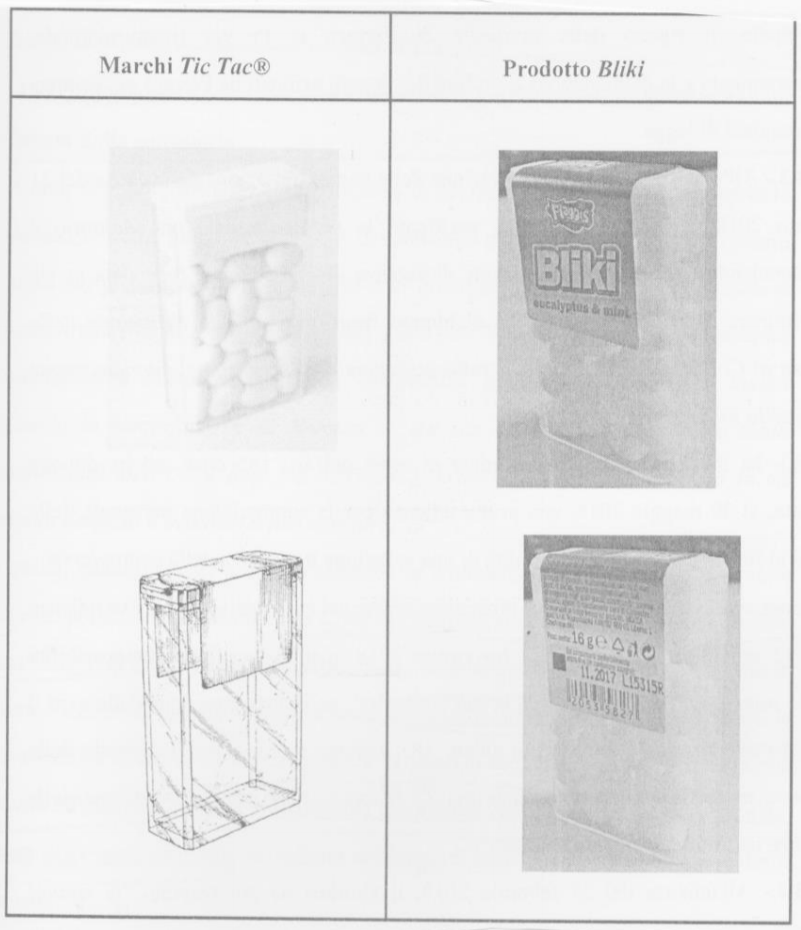It’s all Tic for Tac in trade mark disputes
Written by Éamon Chawke | November 25, 2019
Ferrero is the manufacturer of the well-known comfits marketed and sold under the ‘Tic Tac’ brand. If you don’t know what a ‘comfit’ is (I didn’t), it’s “a sweet consisting of a nut, seed, or other centre coated in sugar” (thanks, Google).
‘Tic Tac’ is obviously a very well-known brand name and is protected by various trade mark registrations for the words ‘Tic Tac’ and various versions of the Tic Tac logo in numerous territories around the world.
However, these words and logos are not the only brand identifiers protected by trade marks. In 1973, Ferrero also obtained two Italian 3D trade mark registrations for the shape of the Tic Tac container.
In 2017, Ferrero issued court proceedings in Italy against Mocca (a Czech manufacturer of comfits sold under the ‘Bliki’ brand) for infringement of its 3D trade mark registrations.
The Italian court found that the 3D trade marks were valid and infringed.
 The Italian court found in particular that the Bliki containers had the same “shape, size and opening mechanism of the packaging (a rectangle within the packaging with a white externally protruding border); transparency of the container; positioning of the label in the upper part of the packaging; an elongated oval shape of the comfits visible within the transparent box.”
The Italian court found in particular that the Bliki containers had the same “shape, size and opening mechanism of the packaging (a rectangle within the packaging with a white externally protruding border); transparency of the container; positioning of the label in the upper part of the packaging; an elongated oval shape of the comfits visible within the transparent box.”
Briffa comment
There a couple of key points to take away from the ‘Tic Tac’ saga:
First, consider all brand identifiers.
When most business owners are considering protecting their key ‘brand identifiers’ they will (correctly) think about their headline brand name (which can be protected by a word mark) and their headline brand logo (which can be protected by a figurative mark).
These two principal brand identifiers are the key things that consumers remember and respond to and use to find the business and its products and services. These are also the two main things that allow businesses to build goodwill, brand reputation and customer loyalty.
However, business owners should also think about other potential brand identifiers and consider whether it is necessary (and commercially sensible) to take steps to protect them. For example, individual product names, individual product logos, sounds, shapes and even smells are also capable of being protected as trade marks and, in some cases, having secured trade mark protection for those additional brand identifiers may be the difference between successfully neutralising a competitor and losing substantial amounts of revenue to that competitor.
In this case, it is unlikely that the ‘Bliki’ brand would have infringed the wordmarks or figurative marks that protect the ‘Tic Tac’ brand, but the 3D trade mark registrations for the shape of the Tic Tac container (coupled with an unfair competition claim) meant that Ferrero was in a position to successfully neutralise ‘Bliki’ as a competing product.
Needless to mention, taking specialist intellectual property law advice at the earliest available opportunity is essential to ensure that all brand identifiers are identified and (if possible and commercially sensible) protected appropriately.
Second, identify all prior rights and all causes of action.
When a copycat product appears on the market, business owners (or their in-house legal team) will sometimes adopt a ‘scattergun approach’ and send a stock email or letter generically referring to the trade mark portfolio and the alleged infringement.
However, successfully nipping infringement in the bud (as early as possible, and therefore as inexpensively as possible) usually involves a more nuanced approach and in particular a detailed consideration of all possible causes of action. This allows the claimant business to make the most persuasive case possible for the infringer to cease their infringing activity immediately.
A case involving a copycat product will very often give rise to claims for infringement of trade mark and registered designs, as well as claims for copyright infringement, unregistered design right infringement, passing off, unfair competition and potential breach of contract, and all of these potential avenues and strategies should be consider ideally with an intellectual property expert at the earliest possible opportunity.
In this case, the fact that Ferrero was able to claim trade mark infringement, as well as unfair competition, strengthened its position from the outset.
Briffa lawyers are experts in all aspects of intellectual property law and practice and in particular have a wealth of experience managing and advising on intellectual property portfolios for businesses of all shapes and sizes, from start-ups to household names. If you would like to discuss trade marks, copyright, designs, patents or any other intellectual property issue, please do not hesitate to contact us on 020 7096 2779 or info@briffa.com for a free 30-minute consultation.
Written by Éamon Chawke, Solicitor

